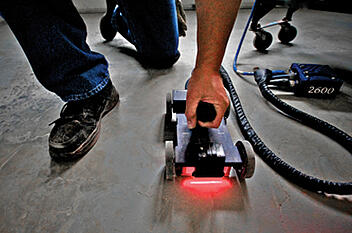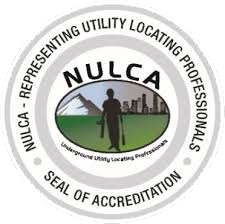X-Ray is widely used in medical diagnosis due to its ability to pass through matter and provide high-resolution images.
.jpg?width=273&height=410&name=IMG_1732%20(1).jpg)
It’s even used in the examination and analysis of paintings because it can reveal such details as the age of a painting and underlying brushstroke techniques that help to identify or verify the artist.
X-Ray is also widely used for nondestructive testing (NDT) of industrial products for defects. It can be used to evaluate circuit boards, metal parts, concrete structure, etc. Although X-Ray can provide unparalleled high-resolution images, in concrete structure scanning it has been largely replaced by ground penetrating radar (GPR), which is a geophysical method that sends electromagnetic waves into the structure and analyzes the reflected energy.
There are many advantages of GPR over X-Ray in concrete structure scanning including the following:
- GPR is safe. GPR does not pose a hazard to people or objects around it. In X-Ray scanning, the procedure can only be carried out by certified radiographers and personal protective equipment (PPE) must be worn. Also, 100+ foot clearance in X-Ray scanning is generally required. Unlike X-Ray, GPR scanning can be done in normal business hours without significant disruption of regular business activities.
- GPR is cost effective. While X-Ray scanning for a location can take hours from start to finish, GPR scanning for a location can usually be done in an hour or less.
- GPR can do real time inspection while X-Ray scanning needs off-site processing and developing. As a result, post-GPR-scanning activities such as saw-cutting and core drilling can be done in a timelier manner.

- X-Ray requires both sides of a slab so it can’t be used for on-grade slabs. GPR is ideal for scanning slab on grade because it only needs access to one side of the concrete slab. In addition, GPR can be used to detect targets beneath a concrete slab such as underground utilities.
- With a wide range of antenna frequencies available, GPR can be very versatile in balancing between resolution and penetration depth. Typically, it's penetration depth is better than X-Ray.
Using Ground Penetrating Radar (GPR) for concrete structure scanning provides a safe, cost effective and fast alternative to X-Ray!
Utility Survey Corp. uses GPR to locate wire mesh, rebar, post-tension cables and embedded utilities within concrete slabs. This is an invaluable process on any projects requiring saw cutting or core drilling through concrete slabs.
What does the process include?














